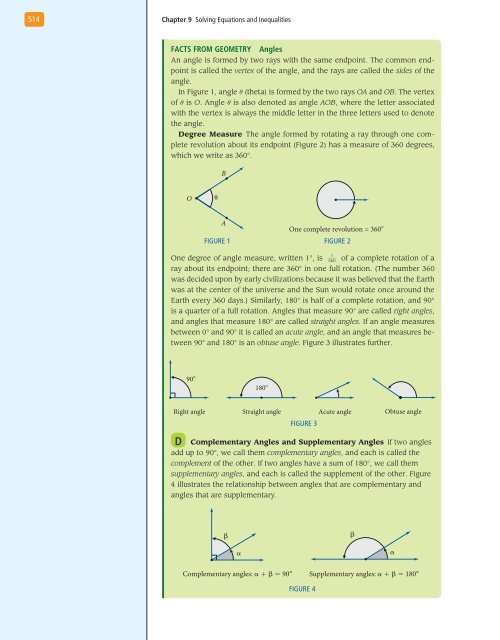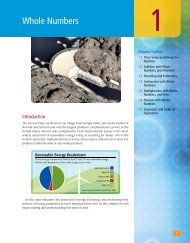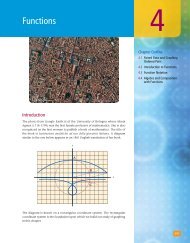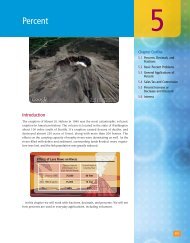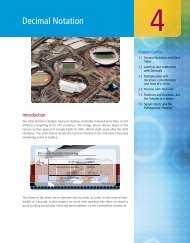Chapter 9 - XYZ Custom Plus
Chapter 9 - XYZ Custom Plus
Chapter 9 - XYZ Custom Plus
Create successful ePaper yourself
Turn your PDF publications into a flip-book with our unique Google optimized e-Paper software.
514<br />
<strong>Chapter</strong> 9 Solving Equations and Inequalities<br />
facts from geometry Angles<br />
An angle is formed by two rays with the same endpoint. The common endpoint<br />
is called the vertex of the angle, and the rays are called the sides of the<br />
angle.<br />
In Figure 1, angle θ (theta) is formed by the two rays OA and OB. The vertex<br />
of θ is O. Angle θ is also denoted as angle AOB, where the letter associated<br />
with the vertex is always the middle letter in the three letters used to denote<br />
the angle.<br />
Degree Measure The angle formed by rotating a ray through one complete<br />
revolution about its endpoint (Figure 2) has a measure of 360 degrees,<br />
which we write as 360°.<br />
B<br />
O<br />
<br />
A<br />
Figure 1<br />
One complete revolution = 360<br />
Figure 2<br />
One degree of angle measure, written 1°, is } 1<br />
360 } of a complete rotation of a<br />
ray about its endpoint; there are 360° in one full rotation. (The number 360<br />
was decided upon by early civilizations because it was believed that the Earth<br />
was at the center of the universe and the Sun would rotate once around the<br />
Earth every 360 days.) Similarly, 180° is half of a complete rotation, and 90°<br />
is a quarter of a full rotation. Angles that measure 90° are called right angles,<br />
and angles that mea sure 180° are called straight angles. If an angle measures<br />
between 0° and 90° it is called an acute angle, and an angle that measures between<br />
90° and 180° is an obtuse angle. Figure 3 illustrates further.<br />
90<br />
180<br />
Right angle<br />
Straight angle<br />
Acute angle<br />
Obtuse angle<br />
D<br />
Figure 3<br />
Complementary Angles and Supplementary Angles If two angles<br />
add up to 90°, we call them complementary angles, and each is called the<br />
complement of the other. If two angles have a sum of 180°, we call them<br />
supplementary angles, and each is called the supplement of the other. Figure<br />
4 illustrates the relationship between angles that are complementary and<br />
angles that are supplementary.<br />
<br />
<br />
<br />
Complementary angles: 90°<br />
Supplementary angles: 180°<br />
<br />
Figure 4


